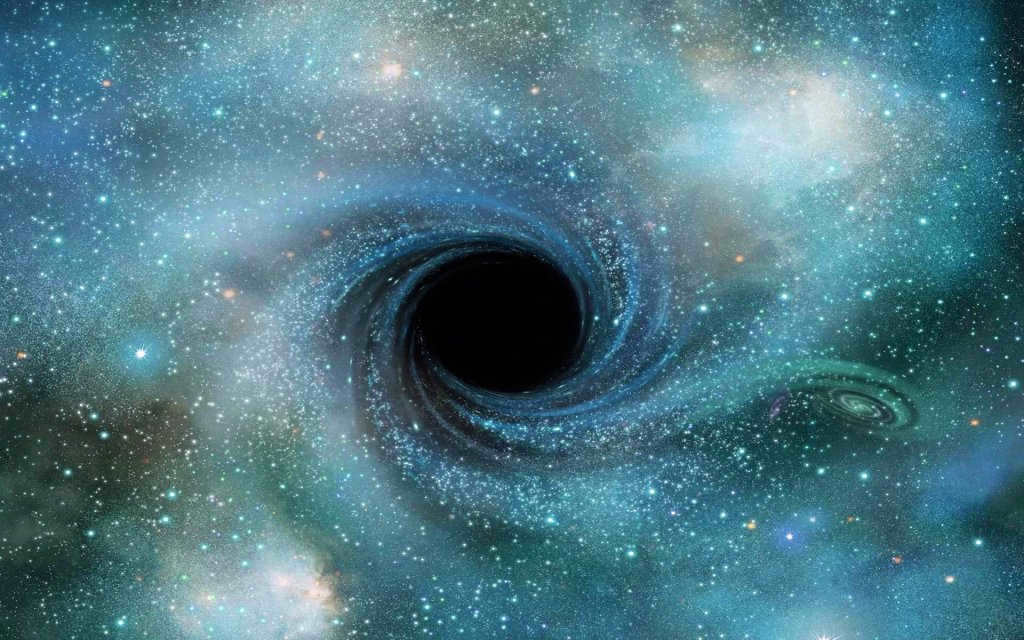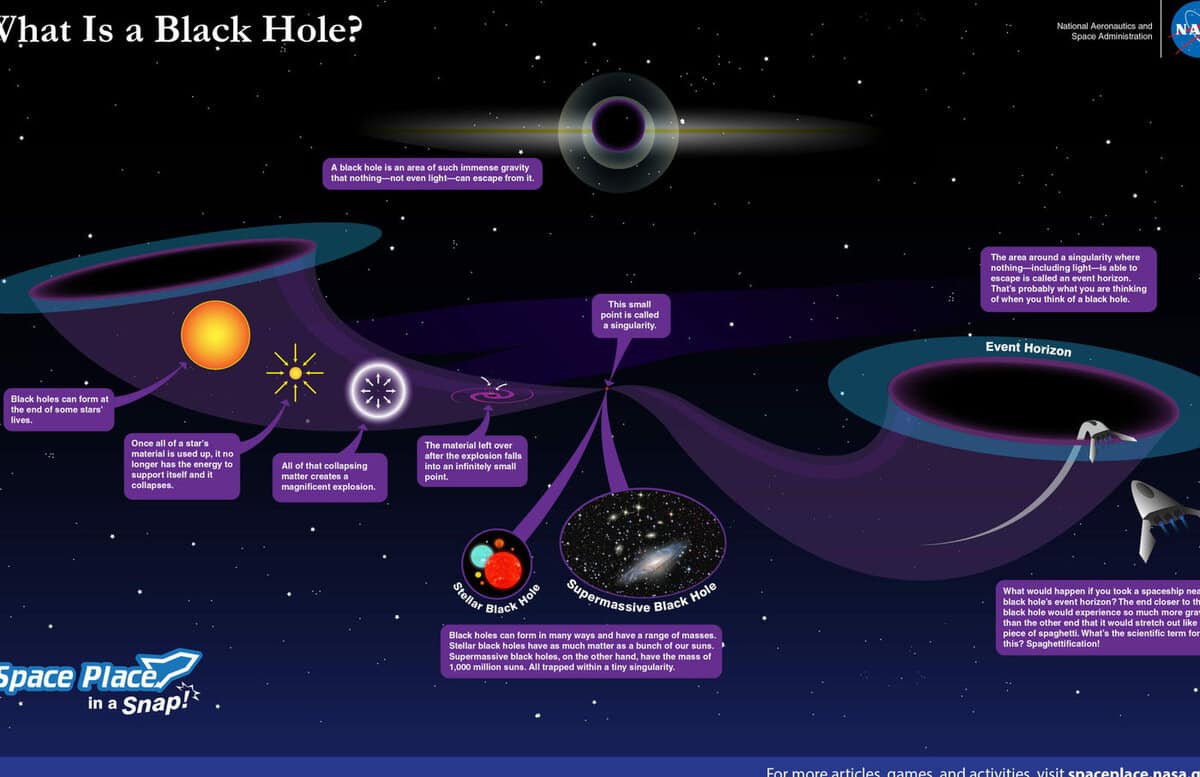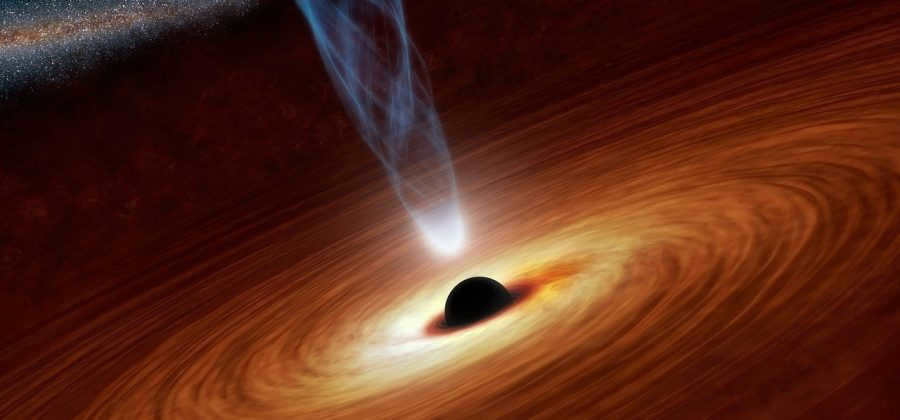
Conducting scientific experiments inside a black hole is the only way to fully understand what it is and what happens inside. However, this is a very difficult task.
The closest object with black hole characteristics, known as V4641, is located 1600 light years away from Earth.
A light year is equal to 9,460,000 million kilometers. Therefore, scientists rely on mathematical calculations and theories to understand the nature of black holes. The first theories were put forward by Robert Oppenheimer and Hartland Snyder in 1939.
But it is not necessary to delve into complex formulas. It is possible to explain what a black hole is in simple terms.
What is the origin of black holes?
The appearance of black holes is caused by processes occurring within the cores of supermassive stars. These stars maintain high temperature and pressure through thermonuclear reactions, which prevent them from collapsing under their own gravity.
However, when these reactions cease, the star begins to shrink and eventually collapses. If the star’s mass is less than three times that of the sun, it becomes a white dwarf. If it is greater, it collapses into a black hole, essentially collapsing in on itself.
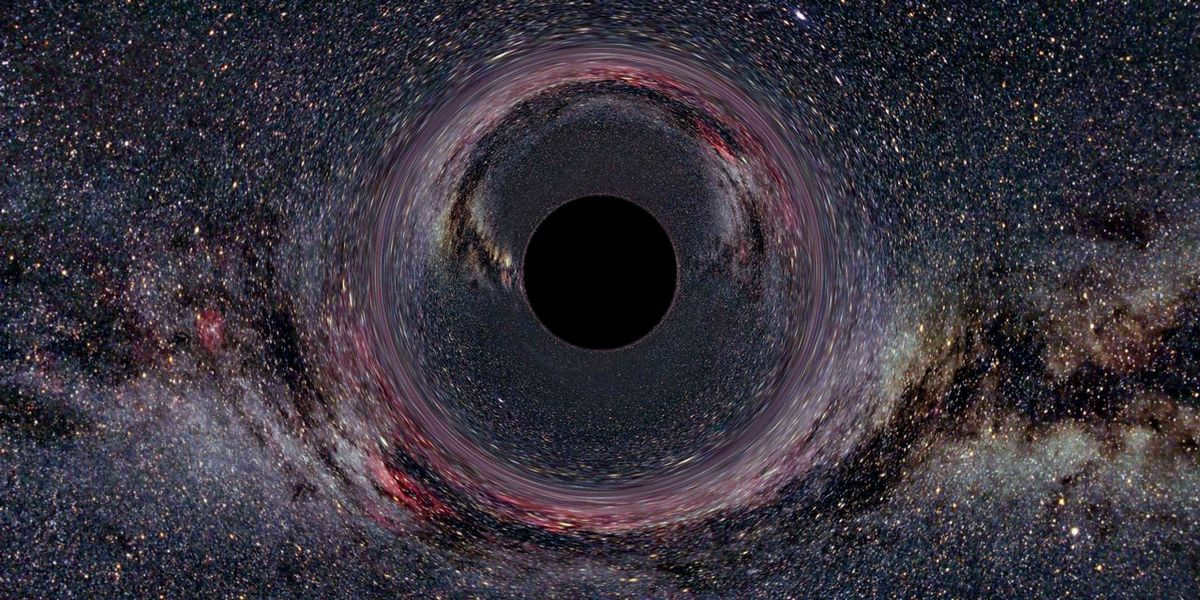
The origin of black holes can be explained by comparing them to a balloon. Just like when you press on the surface of a balloon and see it getting squeezed, the same thing happens to a star. Eventually, the star collapses and transforms into nothing.
What’s the content of black holes?
However, this “emptiness” continues to be a enigma that researchers can document. In the vastness of space, they search for regions that possess the greatest mass but are situated in areas devoid of light. Once these regions are identified, scientists carefully examine them and occasionally come across black holes. Extensive research over the years has not only confirmed the existence of this phenomenon, but has also provided some understanding of the composition of black holes.
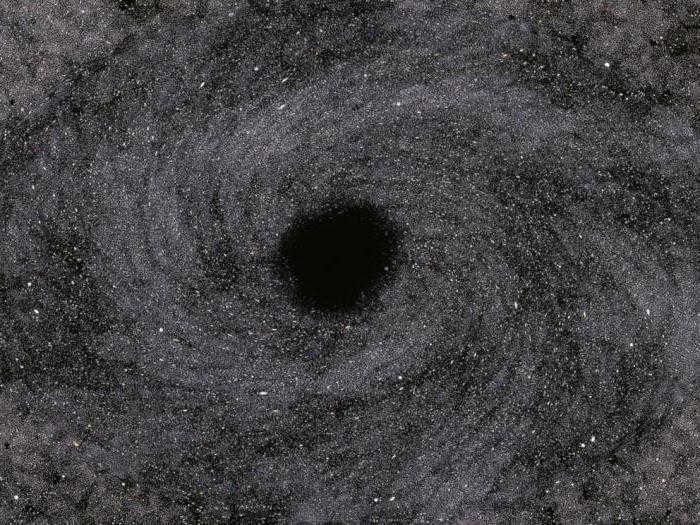
When a massive star collapses, it undergoes a process of shrinking inward, creating an immensely powerful gravitational field. This gravitational field is so intense that it prevents even light from escaping, giving rise to the name “black hole.”
What is important to understand about the interior of a black hole is that the familiar laws of the ordinary world cease to apply. According to Albert Einstein’s theory, gravity bends the fabric of space, leading scientists to believe that inside a black hole, the concepts of space and time lose their significance.
Given the scenario where an object descends into it, the subsequent fate remains unknown. The only certainty is that once the object crosses the event horizon, it will be forever beyond reach. Situated at the threshold of a black hole, the event horizon represents the ultimate boundary, the point of irreversibility. Moreover, it emits particle streams into the cosmos, a phenomenon known as Hawking radiation. Thus, it serves as the final observable frontier before plunging into oblivion.
What occurs if one were to leap into a black hole?
This seemingly inconceivable incident is actually conceivable. However, the depiction of what it would resemble is challenging to reconcile within the confines of conventional thinking. The essence of the matter is that the fate of an individual descending into a black hole can be assessed from two perspectives simultaneously: an external observer and the person themselves. The predicament arises from the fact that distinct phenomena transpire to the individual from each standpoint. At the very least, this is the assertion made by scientists, who base their claims on the principles governing the Universe.
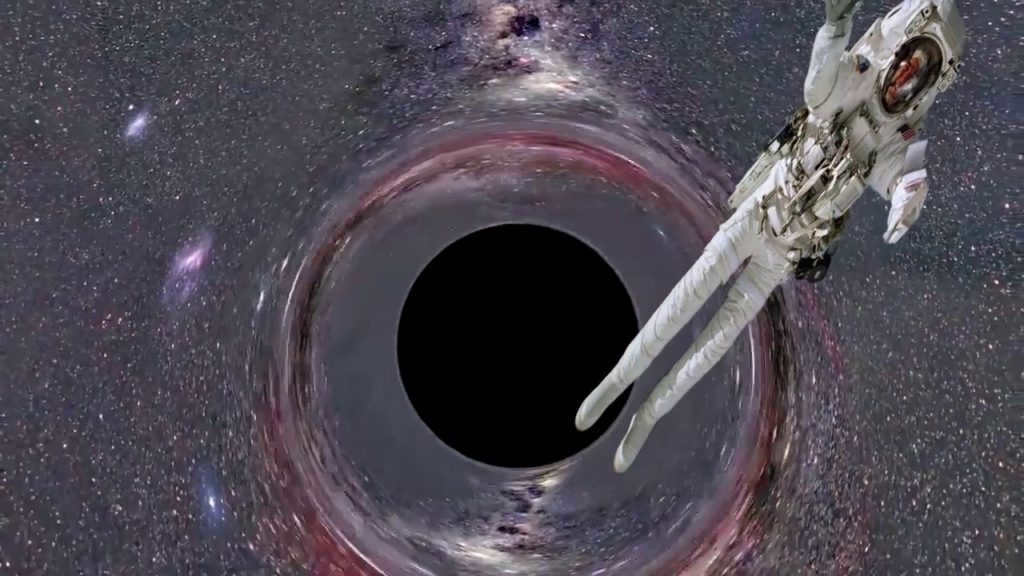
When an individual approaches the event horizon of a black hole, as seen by an external observer, their body undergoes a gradual elongation and narrowing. Upon reaching this boundary, the body undergoes a freezing process and gradually increases in temperature until it ultimately turns to ashes. Consequently, the external observer witnesses the person’s demise. While this may be disheartening, there is a silver lining. The experience is quite different from the individual’s perspective, as their life remains relatively unchanged.
What Lies Beyond the Event Horizon: Life after a Black Hole
The creators of the blockbuster film “Interstellar” have offered their own interpretation of what may transpire inside a black hole and whether survival is possible. According to their narrative, the protagonist is transported into a warped space-time continuum upon entering the black hole, allowing him to exist simultaneously in multiple locations. This phenomenon, known as a gravitational singularity, reflects the genuine curvature of space-time posited in scientific theory. It is conceivable that such an existence awaits any individual who finds themselves ensnared within the clutches of a black hole.
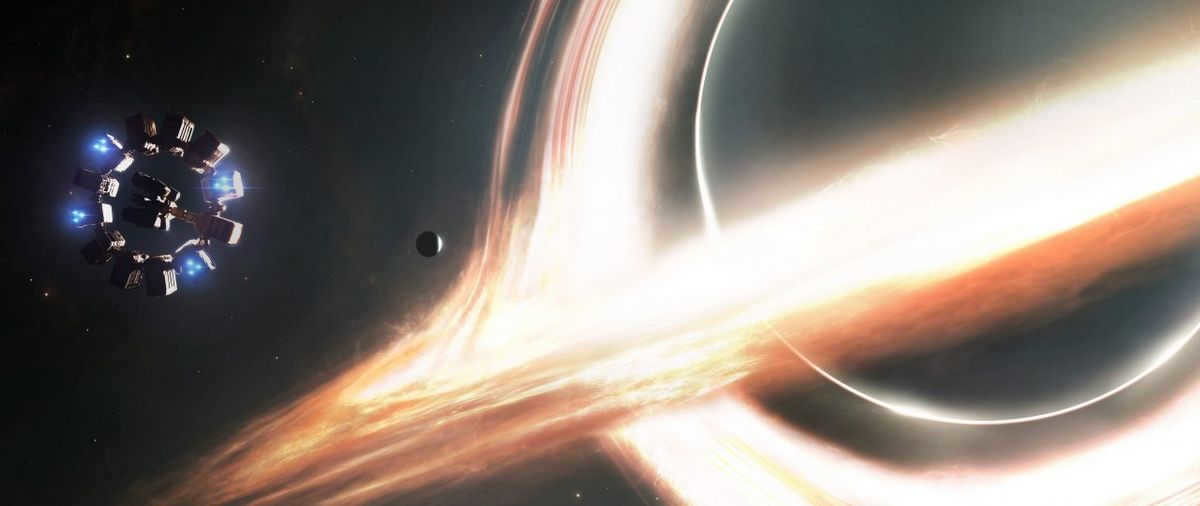
It is important to mention that numerous scientists have commended the events portrayed in the film for being remarkably consistent with existing research findings. However, no one has yet been able to conduct a real-life experiment involving passage through a black hole. Given the uncertainty surrounding what actually occurs inside a black hole, it is advisable to maintain a respectful distance from its event horizon.
It may still take several years, or possibly even a decade, for experts to thoroughly study this phenomenon. It is possible that, in the future, new discoveries by scientists through black holes could challenge our understanding of time and space. For now, the question of black holes largely remains a cosmic enigma, much like the existence of other intelligent beings in the universe apart from Homo Sapiens.

It is not uncommon to hear reports of scientists uncovering new black holes or even confirming their collision in distant space.
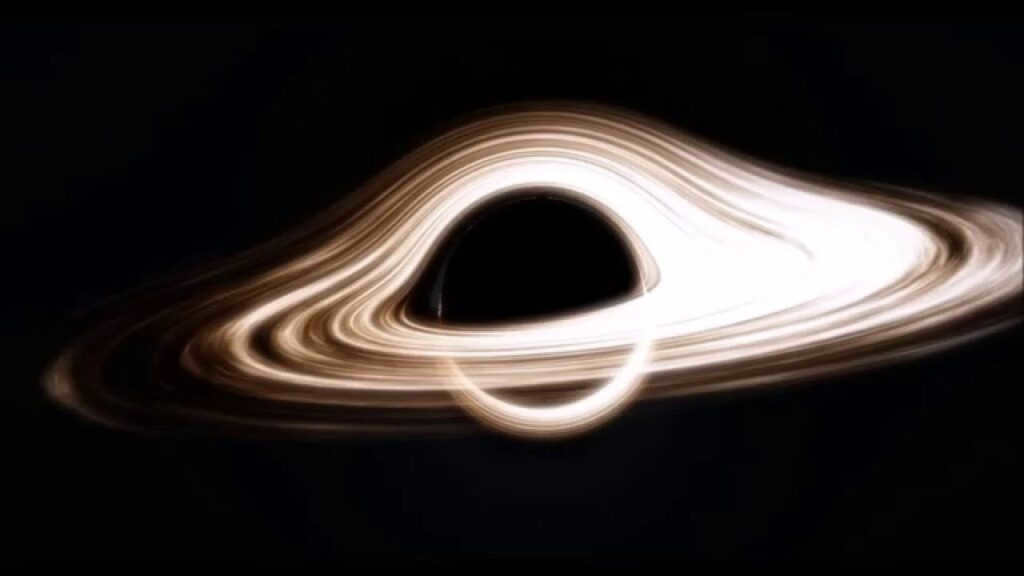
Nevertheless, data indicates that a limited number of individuals possess knowledge regarding the true nature of a black hole. Our objective is to elucidate this complex phenomenon in the most comprehensible manner imaginable (indeed, quite straightforward).
A black hole is not just a void or a “wormhole” in space. It is an area where an immense quantity of matter is densely packed, resulting in an incredibly compact space.
How does this occur? Picture a star that is ten times larger than the Sun. Can you envision it? Now, attempt to mentally compress it to the point where it could fit inside, say, Moscow.
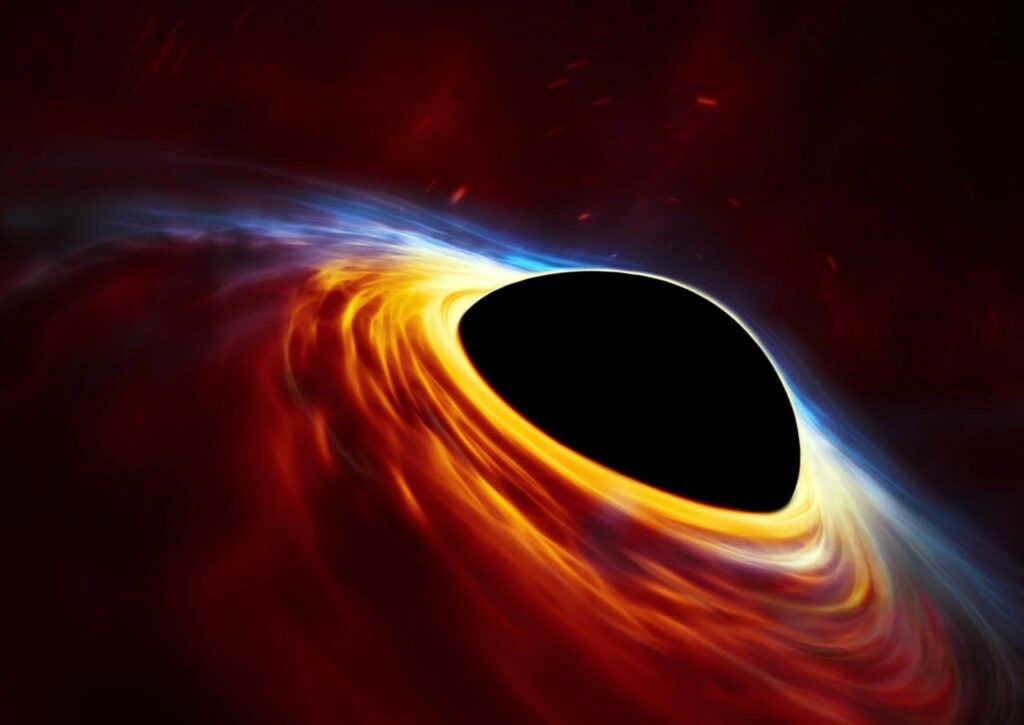
In order for this phenomenon to occur, an immense amount of pressure would be necessary, resulting in the gravitational field becoming so powerful that even photons would be unable to escape its gravitational pull.
Glossary
The term “black hole” was coined by John Wheeler in 1967. However, historical records indicate that astronomers have been describing enigmatic celestial objects with extraordinary density and mass for centuries. Interestingly, Albert Einstein predicted their existence in his General Theory of Relativity (GTR).
According to GTR, when a massive star reaches the end of its life, it leaves behind a small, compact core. If the star is at least three times larger than the Sun, it is likely to collapse into a black hole.
It is crucial to understand that black holes cannot be directly observed through telescopes. Nevertheless, their location and size can be accurately determined through their gravitational effects on surrounding objects and matter.
There is a similar phenomenon that can also be observed when a star comes into close proximity with a black hole (this can cause the star to rupture). When the black hole starts to consume matter, it undergoes acceleration and heats up to extreme temperatures. As a result, a stream of X-rays is released into space, which astronomers detect here on Earth.
Is it the end of a star or the beginning of a black hole?
Black holes typically form as a result of supernova explosions, while smaller stars with insufficient mass transform into neutron stars. A star that has a mass three times that of the Sun has the potential to become a black hole after it dies.
When a massive star reaches its end, remarkable processes take place. Let’s try to simplify them: as the star collapses and shrinks, its surface gradually approaches a hypothetical boundary known as the event horizon. If you were on the surface of the star at this point, time would appear to slow down for you compared to an observer outside the star.
Once the surface of a star reaches the event horizon, time ceases to exist and the star becomes incapable of further collapse. Essentially, a black hole is an object that is infinitely indestructible and exists outside of the constraints of time. It is safe to say that black holes are far beyond our comprehension of the natural order of the universe.
The emergence of bigger black holes
In 2004, scientists at NASA who specialize in astrophysics made a remarkable discovery when they observed the origin of brief bursts of gamma rays. By aiming the powerful Chandra and Hubble telescopes towards this phenomenon, they were able to determine that the source was actually a collision between a black hole and a neutron star. The outcome of this collision was the birth of a new black hole, one that was noticeably larger in size.
There exist remnants of massive stars known as black holes. These black holes typically have a mass 10 to 24 times greater than that of the Sun. Regular observation by scientists allows for the study of the effects these objects have on the surrounding space.
However, some black holes are isolated, which is perhaps the most intriguing aspect of this phenomenon. The reason for this is that there is no presence of gas, dust, or stars in their vicinity. Consequently, detecting isolated black holes is extremely challenging, if not impossible. Computer simulations suggest that there could be trillions of these miniature objects in the Milky Way alone! Although they are considerably smaller than classical black holes, as they lack a source of material to sustain their growth, the internal processes within them are similar to those found in their larger counterparts.
Undoubtedly, supermassive black holes, which are millions or even billions of times more massive than the Sun, are inevitable! These colossal entities reside in the core of nearly every galaxy, including our own, relentlessly consuming anything that comes near them. This vast amount of matter has enabled them to accumulate an immense mass over millions of years.
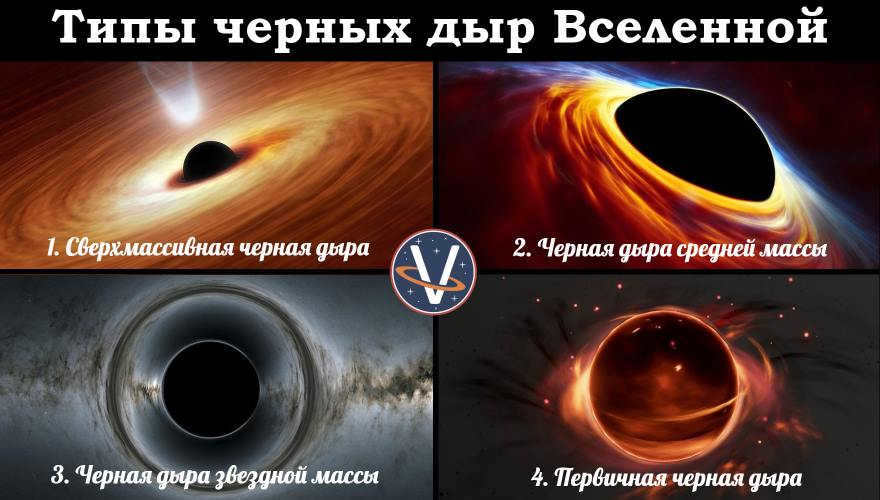
In recent times, it was widely believed that there existed only a single type of black hole in the vast expanse of the Universe. Nevertheless, with the continuous advancement of technology and scientific knowledge, it has come to light that this notion is far from accurate. Numerous classifications have been proposed to categorize these awe-inspiring and treacherous cosmic phenomena. However, this merely scratches the surface, as the majority of the cosmos still remains unexplored. Here, we will delve into what precisely constitutes a black hole and delve into the various types it can be classified into.
What is a black hole?
A black hole is an astronomical object with a gravitational field so strong that nothing, not even light, can escape from it. Currently, there are four known types of black holes in the universe, which have been identified through scientific discoveries and theories.
Type 1: Supermassive black hole
The first type of black hole is known as a supermassive black hole. These black holes are incredibly large, believed to be larger than the entire solar system. According to astrophysicists, most massive galaxies have a supermassive black hole at their center.
There is another category known as an intermediate mass black hole. These black holes are created when a supergiant star collapses after going supernova, releasing matter and leaving behind the densest elements in its core. Under the influence of gravity, these elements then collapse further. It has been hypothesized that these black holes could have a size similar to that of Earth, but with a significantly greater mass, approximately 100 times that of the Sun.
№3. Stellar mass black holes
Stellar-mass black holes, which are the third type, are created through the explosion of a smaller star. As a result, they have a smaller size and typically measure only a few kilometers in diameter. However, despite their smaller size, they possess a greater mass compared to that of our Sun.
№4. Primary black holes
Primary black holes, the final type, are believed to have originated at the inception of the universe as we presently understand it. However, their true origins remain largely unknown. These black holes are incredibly tiny, comparable in size to a grain of sand on a beach. Despite their small size, they possess a mass similar to that of our Sun.
It is highly probable that these theories may be flawed or may not accurately correspond to the realities of our Universe. Nevertheless, they are based on meticulous and extensive research conducted by some of the most brilliant astronomers on Earth over the course of many years.
Were you aware that there exist various categories of black holes? Isn’t that captivating? What are your thoughts on this matter? Do you believe we will uncover additional classifications?
Black holes were initially discussed by Albert Einstein in 1916 when he formulated the general theory of relativity. The actual term “black hole” was coined by John Wheeler in 1967. The first black hole was “spotted” in 1971.
The categorization of black holes encompasses three types: stellar-mass black holes, supermassive black holes, and intermediate-mass black holes. Make sure to watch the video on black holes to discover numerous intriguing facts and gain a better understanding of these enigmatic cosmic formations.
Curious details
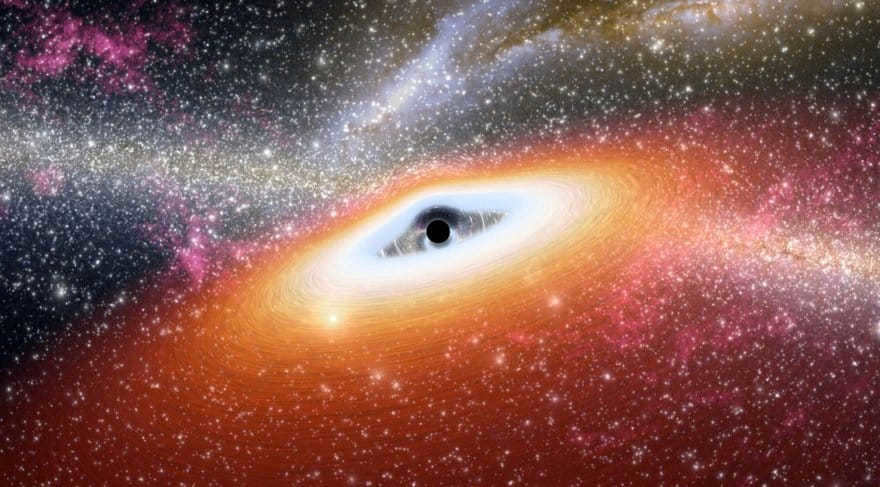
- If you happen to find yourself within the confines of a black hole, the force of gravity will stretch you to your limits. However, there is no need to fret, as you will meet your demise well before reaching the singularity. A study conducted in 2012 proposed that quantum effects transform the event horizon into a blazing wall, reducing you to a mere pile of ashes.
- Contrary to popular belief, black holes do not “suck in” matter. This phenomenon is actually caused by the absence of vacuum within the structure, allowing material to simply fall through.
- The first black hole ever discovered was Swan X-1, detected by rockets equipped with Geiger counters. In 1971, scientists intercepted a radio signal emitted by Swan X-1. This celestial object became the center of a heated debate between Kip Thorne and Stephen Hawking. Hawking initially argued that it was not a black hole, but in 1990, he ultimately admitted defeat.
- If a star were to approach too closely, it might experience catastrophic tidal forces that would cause it to be ripped apart.
- It is commonly believed that there may be as many as one billion stellar black holes, each with a mass three times that of the Sun.
- When comparing string theory and classical mechanics, the former predicts a greater diversity of massive celestial objects.
Risk
When a star exhausts its fuel, it has the potential to initiate a process of self-destruction. If the star’s mass is three times greater than that of the sun, the leftover core will either collapse into a neutron star or evolve into a white dwarf. However, if the star is more massive, it will undergo a transformation into a black hole.

The correlation between the mass of a black hole and the mass of a bulge
These entities are compact yet possess extraordinary density. Envision a scenario where you are faced with an object the magnitude of a metropolis, yet its mass is threefold that of our sun. As a result, an immensely powerful gravitational force is generated, drawing in dust and gas and causing the object to expand. It may come as a surprise, but our very own Milky Way galaxy could potentially house millions upon millions of stellar black holes.
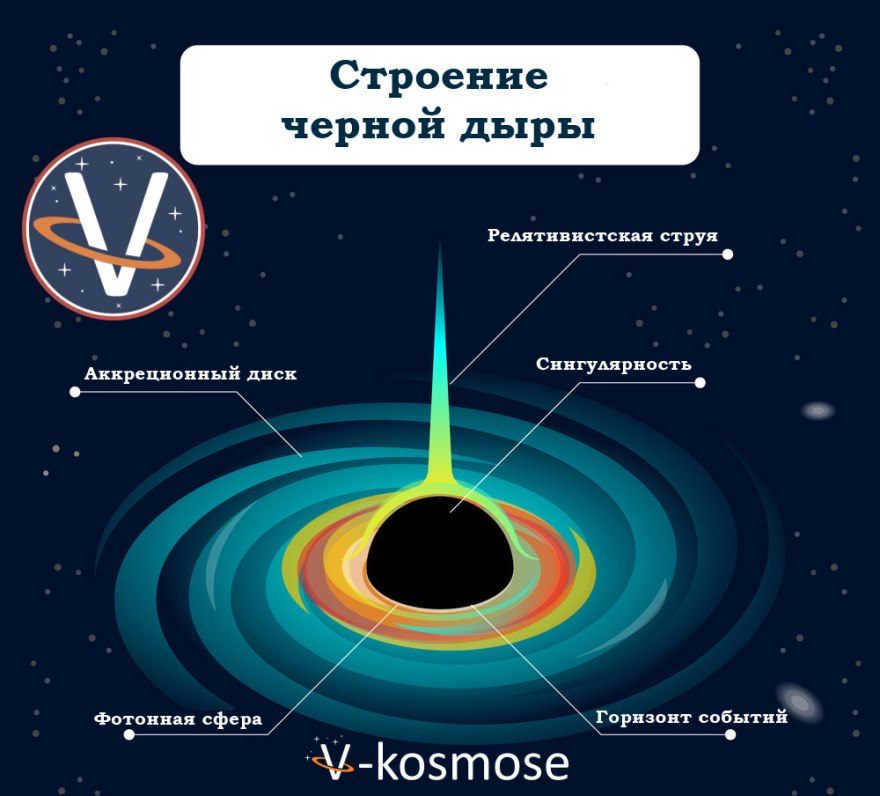
Enormous black holes
Undoubtedly, there is nothing in the vast expanse of the cosmos that can rival the awe-inspiring enormity of supermassive black holes. These colossal entities possess a mass billions of times greater than that of our sun. It is widely believed that nearly every galaxy harbors one of these cosmic behemoths. The exact mechanisms behind their formation are still shrouded in mystery. The prevailing hypothesis suggests that they grow by gradually accumulating mass from the surrounding gas and dust particles.
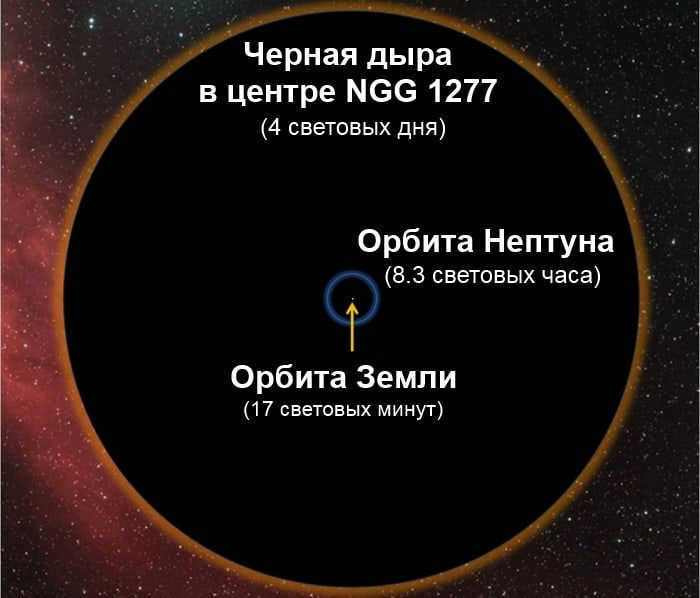
The dimensions of the most massive black holes are thought to be a result of the combination of numerous smaller black holes. Alternatively, it is possible that the collapse of an entire star cluster contributed to their size.
Intermediate black holes
In recent times, researchers have discovered a novel variety of black holes known as intermediate-mass (intermediate) black holes. These peculiar entities can arise as a result of stellar collisions within a cluster, triggering a cascading sequence of events. Over time, these colliding stars gravitate towards the center, amalgamating to form a supermassive black hole.
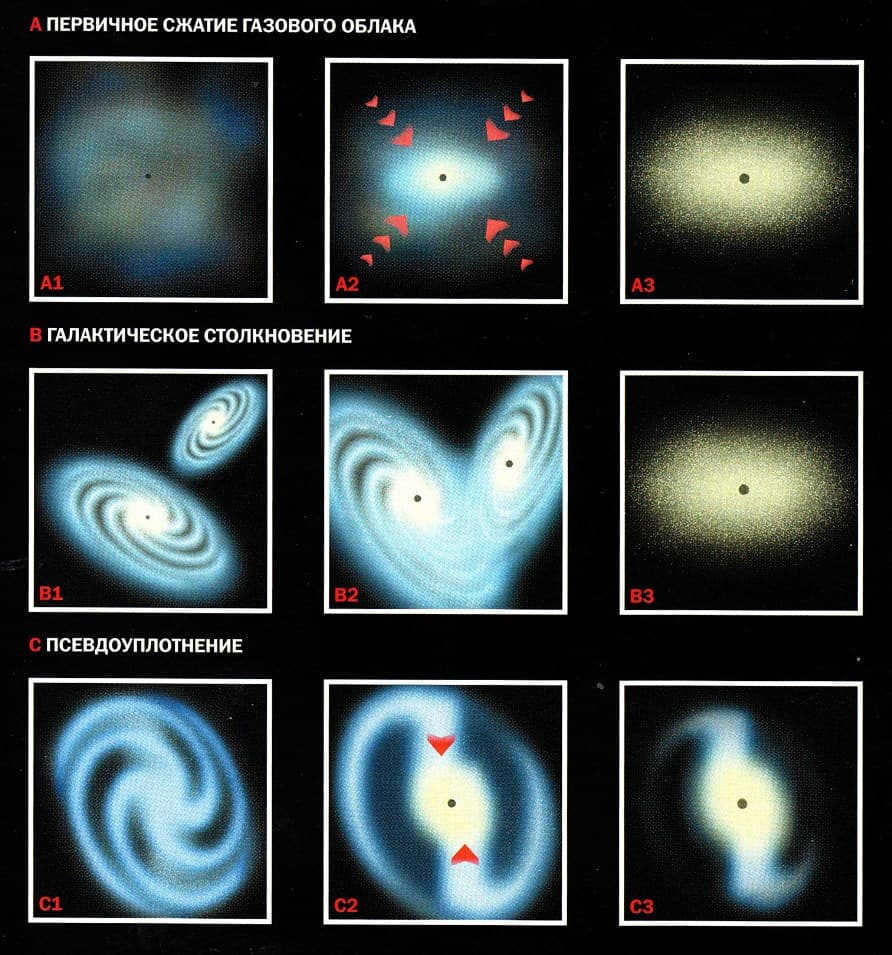
In 2014, a type of object was found in the arm of a spiral galaxy that falls between the extremes. These objects are difficult to detect as they can be situated in unexpected areas.
Theory of Dark Holes
Dark holes are incredibly massive entities, yet they occupy a relatively small amount of space. They also possess immense gravitational forces that prevent anything (including light) from escaping their domain. However, direct observation of dark holes is impossible. Scientists must rely on the radiation emitted when a dark hole is consuming matter.
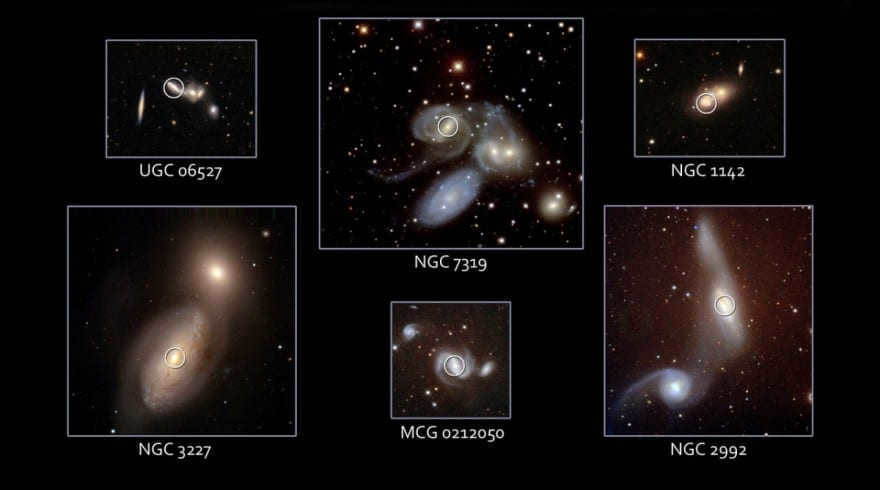
Black holes in merging galaxies
It is interesting to note that there are instances when matter approaching a black hole rebounds off the event horizon and is expelled outward. This gives rise to luminous jets of substance moving at relativistic velocities. These emissions can be detected at considerable distances.
Black holes are extraordinary entities in which the gravitational force is so immense that it is capable of deflecting light, distorting space, and warping time.
Black holes consist of three components: the outer and inner event horizons, and the singularity.
The region known as the event horizon is the point at which light becomes trapped and unable to escape from a black hole. Any object that passes this boundary is permanently trapped within the gravitational pull of the black hole. The central area, where the majority of the black hole’s mass is concentrated, is referred to as the singularity.
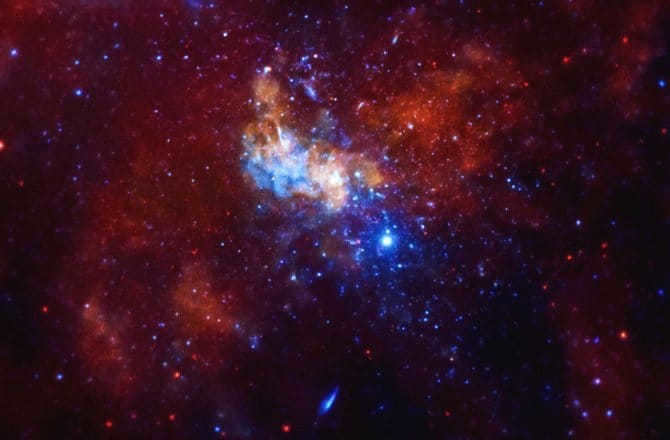
It is possible that the black hole in the Milky Way could be the origin of high-energy neutrinos.
If we consider classical mechanics, nothing can escape from a black hole. However, quantum mechanics introduces a different perspective. Each particle has an antiparticle, which has the same mass but opposite charge. If these particles come into contact, they can annihilate each other.
When such a pair forms outside of the event horizon, one particle can be pulled into the black hole while the other is repelled. This interaction can cause the horizon to shrink and eventually lead to the collapse of the black hole. Scientists are currently studying this mechanism to gain a better understanding.
These findings have significant implications for our understanding of black holes and their behavior.
The existence of black holes has been widely studied and they are considered to be one of the most fascinating phenomena in the universe.
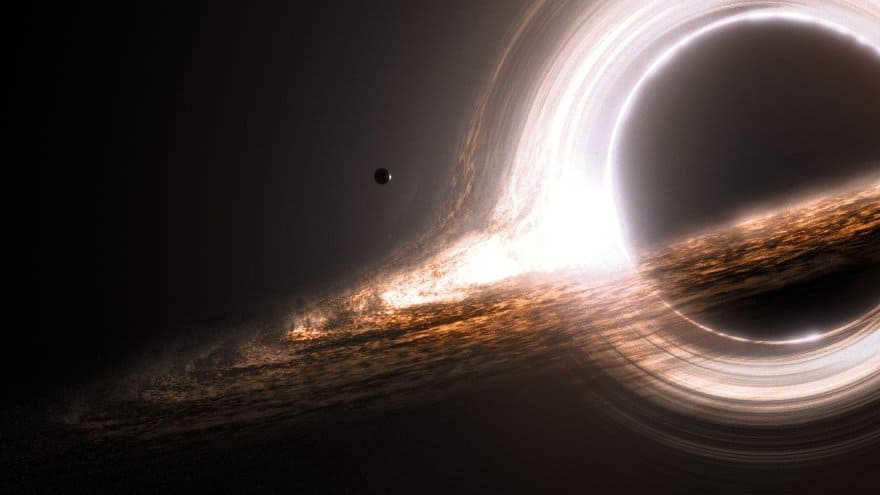
Put simply, a black hole is a specific region in space where an immense amount of mass is concentrated, causing any object within it to be trapped by its gravitational pull. Our understanding of gravity is based on Albert Einstein’s general theory of relativity. To better comprehend the characteristics of a black hole, let’s break it down step by step.
Imagine yourself standing on the surface of a planet, attempting to throw a large rock. Unless you possess the strength of the Hulk, you won’t be able to exert enough force to overcome gravity. The rock will ascend to a certain height, but eventually succumb to gravity’s influence and fall back down. However, if you possess the extraordinary power of a green superhero, you can accelerate the object with enough force to surpass the gravitational field entirely. This velocity required to escape is referred to as the “escape velocity.”
If we break it down into a formula, the speed depends on the mass of the planet. The larger the mass, the stronger the gravitational pull. The escape velocity will depend on your location: the closer you are to the center, the easier it is to escape. Our planet’s escape velocity is 11.2 km/s, while the moon’s is 2.4 km/s.
Now we’re getting to the exciting part. Imagine you have an object with an incredibly high concentration of mass packed into a small space. In that scenario, the escape velocity would be faster than the speed of light. And as we know, nothing can move faster than the speed of light, so no one would be able to overcome such a force and escape. Not even a beam of light!
In the 18th century, Laplace contemplated the exceptional density of matter. Following the development of the general theory of relativity, Karl Schwarzschild managed to discover a mathematical solution to the equation that describes such a phenomenon. Subsequently, Oppenheimer, Wolkoff, and Snyder made their own significant contributions in the 1930s. From then on, the topic started to be seriously debated. It became evident that when a massive star depletes its fuel, it becomes incapable of withstanding the gravitational pull and undergoes a collapse, transforming into a black hole.
According to Einstein’s theory, gravity is a result of the curvature of space and time. The key point is that the conventional rules of geometry do not apply in this context, and objects with mass distort the fabric of space-time. A black hole possesses peculiar characteristics, making its distortion particularly evident. For instance, the object has an “event horizon” – a boundary that demarcates the point of no return. Once an object crosses this boundary, it is impossible to escape.
Essentially, the event horizon is the location where the escape velocity matches the speed of light. Beyond this boundary, the escape velocity is lower than the speed of light. However, if a rocket is capable of accelerating, it possesses sufficient energy to break free.
The geometry of the horizon is quite peculiar. When viewed from a distance, it appears to be a stationary surface. However, as you approach it, you quickly realize that it is expanding at the speed of light! This is why it is effortless to enter but extremely difficult to escape. It may seem confusing, as the horizon is technically motionless, yet simultaneously hurtling forward at light speed. It’s reminiscent of Alice’s predicament, where she had to run at top speed just to remain in the same spot.
When the horizon is reached, there is such a strong distortion in space and time that the coordinates change their meanings. The radial distance, symbolized by “r”, now becomes temporal, while the spatial aspect is represented by “t”. This means that you cannot stop moving with a smaller radial distance, and you also cannot travel to the future in regular time. Instead, you will reach a singularity where the radial distance is zero. No matter how much you try, throwing rockets or running your engine at maximum, you will not be able to escape.
The term “black hole” was coined by John Archibald Wheeler. Prior to that, they were referred to as “cooled stars”.
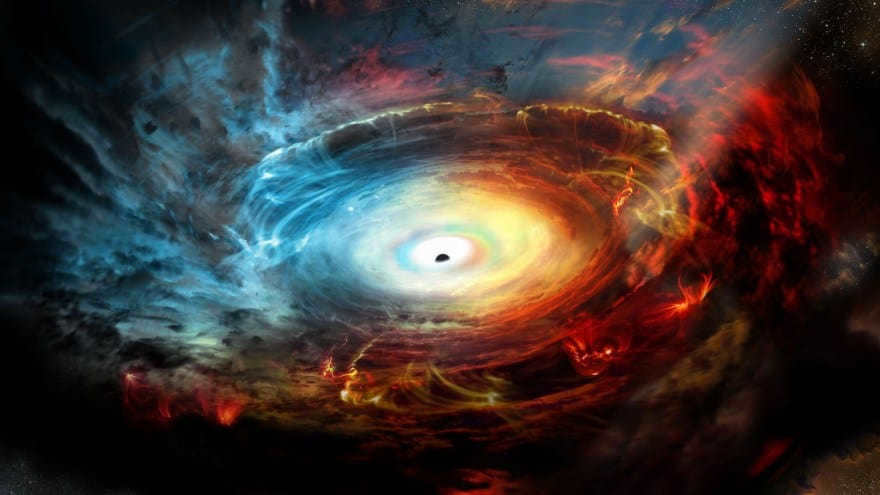
There are two methods for determining the size of an object. One approach is to measure its mass or the size of its area. If we consider the first criterion, there is no specific limit to the mass of a black hole. You can use any quantity, as long as you can compress it to the required density.
Most of these structures form after the death of massive stars, so we can anticipate their weight to be similar. The typical mass for such a black hole is expected to be 10 times that of the sun – 10.31 kg. Additionally, each galaxy should contain a central supermassive black hole with a mass one million times that of the sun – 10^36 kg.
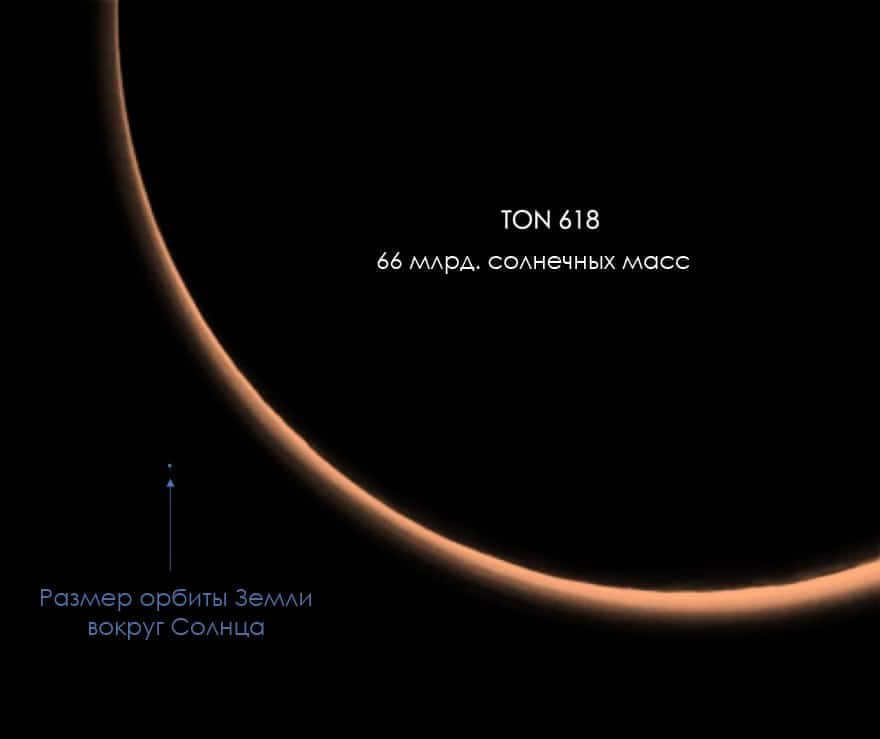
Comparative size of the supermassive black hole TON 618
The larger an object is in terms of mass, the more mass it contains. The radius of the event horizon and the mass of a black hole are directly proportional. This means that if one black hole weighs 10 times more than another, its radius will be 10 times larger. For example, a black hole with the mass of the Sun has a radius of 3 km. If it is a million times more massive, then its radius will be 3 million km. These may seem like incredibly huge objects, but we should remember that these are common concepts in astronomy. The radius of the Sun, for instance, reaches 700,000 km, while a black hole has 4 times that size.
What occurs if you enter a black hole?
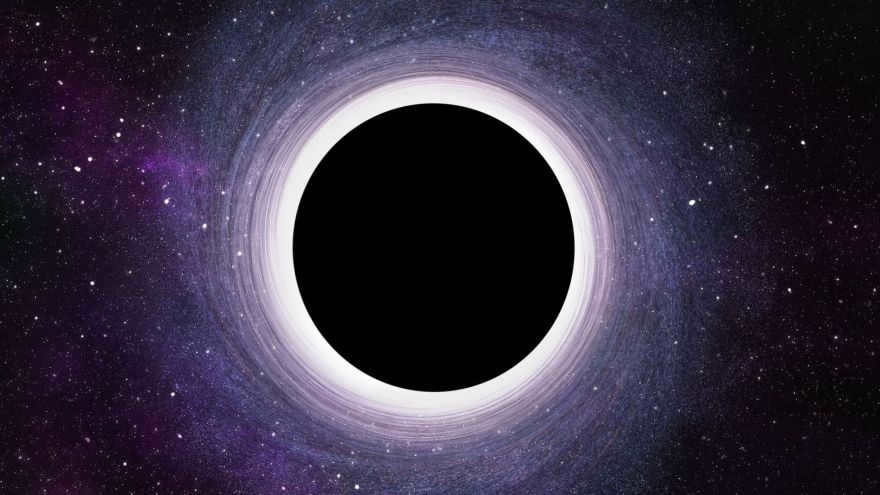
Imagine a scenario where your spacecraft is unfortunate enough to be on a collision course with a supermassive black hole. There is no use in resisting this inevitable outcome. You decide to power down the engines and accept your fate. What can we anticipate in this situation?
Let’s begin with the sensation of weightlessness. As you are in free fall, both you and your spaceship experience a lack of gravitational pull. The further you descend towards the center of the black hole, the more intense the tidal gravitational forces become. This means that certain parts of your body, such as your feet, are closer to the center than others, like your head. Consequently, you will start to feel as though you are being stretched. Eventually, the gravitational forces will be so overwhelming that you will be torn apart.
These forces are not detectable until you reach a distance of 600,000 kilometers from the center. This occurs beyond the horizon line. However, we are referring to an immense entity. If you were to fall into a hole with the mass of the sun, the gravitational forces would surround you at a distance of 6000 km from the center and tear you apart before you reached the horizon. This is precisely why we send you into the larger one, so that you may perish within the hole itself rather than during the approach.
What lies within? We regret to inform you that there is nothing particularly remarkable. Some objects may appear distorted, but there is nothing else extraordinary. Even after crossing the horizon, you will observe the surrounding entities moving along with you.
How much time will it take for all of this to occur? The duration is contingent upon the distance you are at. For instance, if you begin from a stationary point where the singularity is ten times the size of the hole’s radius, it will only require eight minutes to approach the horizon, followed by an additional seven seconds to enter the singularity. If you happen to be descending into a small black hole, the events will unfold at a quicker pace.
Once you pass through the horizon, you’ll have the opportunity to shoot rockets, scream, and cry. You will have a seven-second window to engage in all these activities before colliding with the singularity. However, at this point, there is nothing that can save you. So, simply savor the experience.
What will my companion observe from a safe distance?
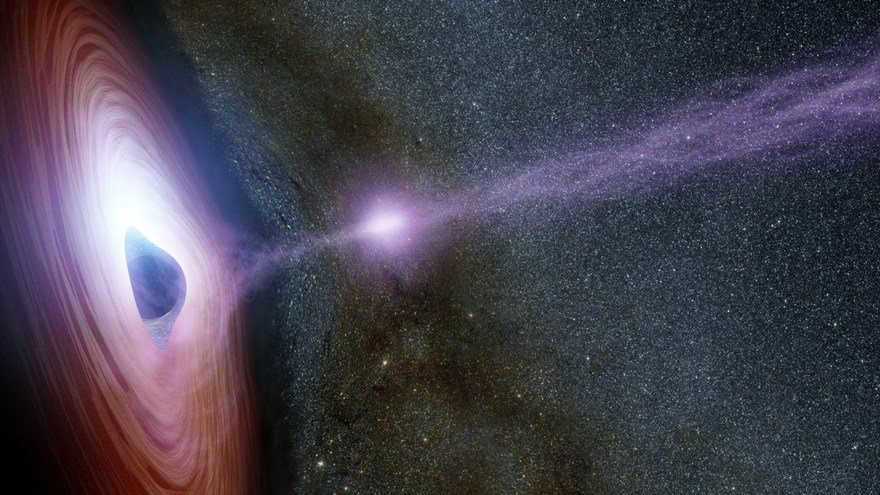
Imagine you are in a hopeless situation, falling into a hole, while your friend is observing from a safe distance. Interestingly, their perspective will be quite different. They will notice that as you get closer to the horizon, your speed will slow down. However, no matter how long your friend waits, they will never see you reach the horizon.
Allow me to elaborate. A black hole can form from the collapse of a star. As the star collapses, let’s call your friend Cyril, he will see it shrinking but will never perceive the horizon getting closer. This is why they are referred to as “frozen stars,” as they appear to freeze at a certain radius.
Alternatively, you have the option to approach the situation from a different perspective. As you move closer to the horizon, time appears to stretch out, becoming longer. Let’s say you have a highly advanced spacecraft. You successfully navigate to the vicinity of the horizon, remaining there for a few minutes, and miraculously make it back to Cyril unscathed. Who do you encounter? The elderly gentleman! This is because, for you, time was passing at a much slower rate.
So, what is the truth in this scenario? Is it an optical illusion or a manipulation of time? The answer depends on the coordinate system used to describe the black hole. If we rely on Schwarzschild coordinates, the time coordinate (t) reaches infinity upon crossing the horizon. However, this system’s indicators offer a somewhat blurry depiction of events near the black hole itself. At the horizon line, all coordinates become distorted, leading to a singularity. Nevertheless, both coordinate systems can be utilized, thus validating both interpretations.
Actually, you will become completely invisible, and Cyril will cease to perceive you after a certain period of time. Do not overlook the phenomenon of redshift. You emit detectable light at a specific wavelength, but Cyril will perceive it at a longer wavelength. As waves approach the horizon, they stretch out. Additionally, keep in mind that radiation is composed of distinct photons.
As an illustration, during the moment of transition, you will emit the final photon. It will eventually reach Cyril after a specific finite time (approximately an hour for a supermassive black hole).
Is it possible for a black hole to absorb all the matter in the entire universe?
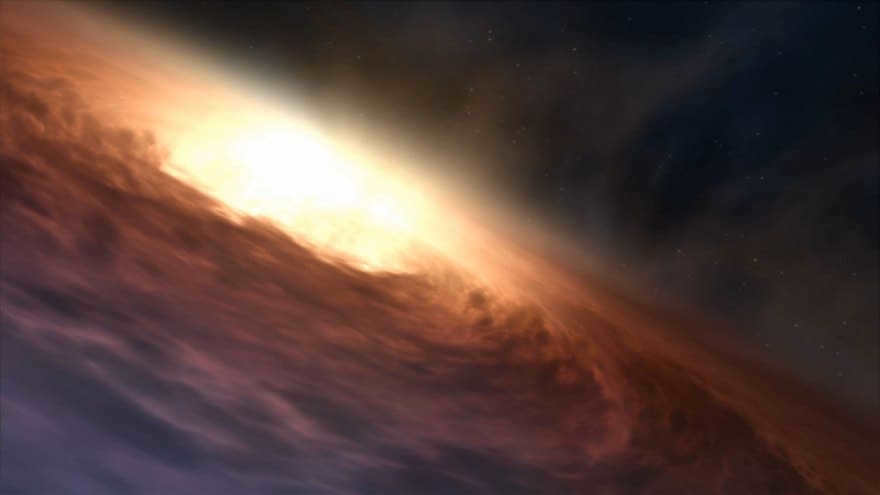
Definitely not. The presence of an event horizon should not be forgotten. This region is the only one from which escape is impossible. Simply stay away from it and remain calm. Additionally, from a safe distance, this object will appear quite ordinary.
What would occur if our star transformed into a black hole?

There is no need to worry, as the Sun will never undergo such a transformation due to its insufficient mass. Additionally, it will maintain its current appearance for another 5 billion years. After that, it will transition into a red giant, absorbing Mercury, Venus, and potentially affecting our planet. Eventually, it will become a white dwarf.
However, let’s indulge in some imagination. Suppose that the Sun did become a black hole. Initially, we would be engulfed in darkness and cold. However, the Earth and other planets would not be sucked into the black hole. They would continue to orbit the newly formed object in their normal orbits. Why? This is because the event horizon would only extend to 3 kilometers, and gravity would have no significant impact on us.
Can we find proof of the existence of black holes?

Indeed, there is evidence supporting the existence of black holes. Of course, direct observation is not possible since light cannot escape their gravitational pull. However, there are indirect indications. Let’s consider a scenario where you come across a region that potentially contains a black hole. How can you confirm its presence? One approach is to measure the mass. If you observe an excessive amount of mass concentrated in a particular area or if it appears to be invisible, then you are on the right path. The galactic center and X-ray double systems serve as two significant areas to investigate.
These immense entities are classified as black holes for a couple of reasons. Firstly, there are no other alternatives. There are no objects that are more massive, darker, and more compact. Additionally, there is a hypothesis that every active and large galaxy harbors such a colossal creature in its core. However, this notion is still not completely confirmed.
Nevertheless, two recent discoveries support this hypothesis. The closest active galaxy possesses a “water maser” system (a potent source of microwave radiation) in close proximity to its nucleus. By employing an interferometer, scientists have mapped out the distribution of gas velocities. In other words, they have measured velocities within a half-light-year radius at the center of the galaxy. This investigation has allowed them to conclude that there is an enormous object residing within, with a radius extending to half a light-year.
The second discovery is even more compelling. Utilizing X-rays, the scientists stumbled upon a spectral line emanating from the core of the galaxy, signifying the presence of nearby atoms moving at an incredibly high velocity (equivalent to 1/3 of a light-year). Additionally, the emission corresponded to a redshift, indicating the presence of a black hole’s event horizon.
Another category of black holes can be found within the Milky Way. These are known as stellar black holes, which form following a supernova explosion. If they were to exist independently, they would hardly be noticeable even at close range. However, we are fortunate because the majority of them exist within binary systems. This makes them easier to detect, as a black hole exerts gravitational force on its neighboring mass. The material that gets “ripped out” forms an accretion disk that becomes heated, resulting in the emission of strong radiation.
Imagine you managed to discover a binary system. How can you determine if one of the objects is a black hole? Once again, we rely on the mass. In order to do so, measure the orbital velocity of a nearby star. If the mass is disproportionately large for its size, there are no other possibilities.
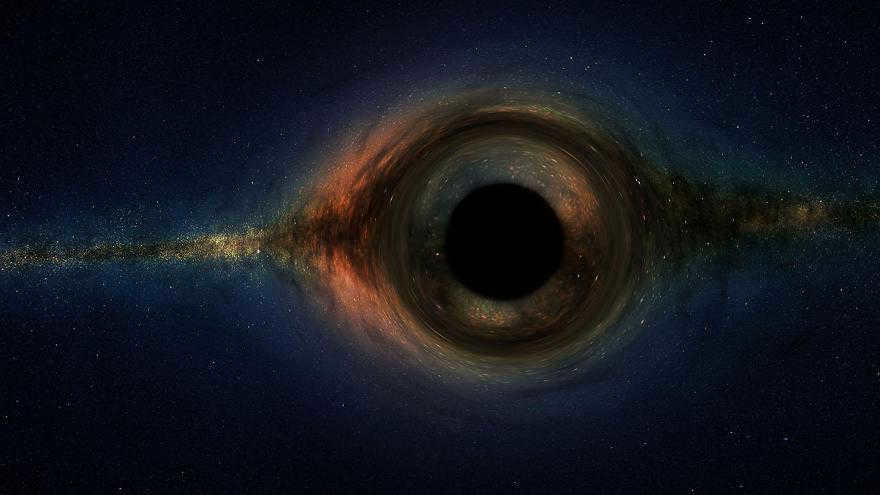
It is a complicated mechanism. Stephen Hawking touched upon a similar subject in the 1970s. He mentioned that black holes are not truly “black”. There are quantum mechanical effects present that cause them to emit radiation. Over time, the black hole begins to diminish in size. The rate of radiation increases as the mass decreases, resulting in the black hole emitting more and more radiation and accelerating the process of compression until it eventually dissipates.
Nevertheless, this is purely a hypothetical scenario as the outcome of the final phase remains uncertain. There are those who believe that a minute yet consistent residue persists. Present-day theories have yet to propose a more compelling alternative. Nonetheless, the procedure itself is truly remarkable and intricate. One must compute the variables within a warped spacetime, and the outcomes themselves cannot be substantiated under ordinary circumstances.
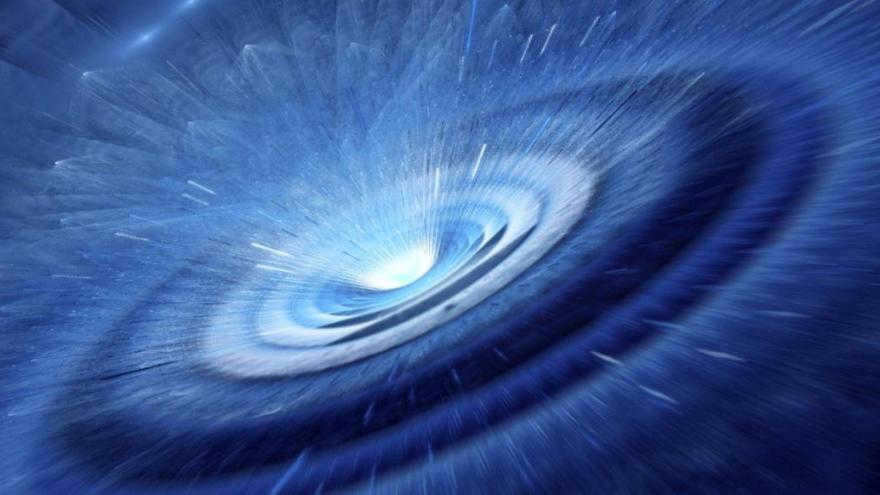
One way we can apply the Law of Conservation of Energy is for brief periods of time. The universe has the ability to generate energy and mass from nothing, but they must quickly vanish. Vacuum fluctuations are a prime example of this phenomenon. Pairs of particles and antiparticles materialize out of thin air, exist for a brief period, and then annihilate each other. While their presence disturbs the energy balance, everything returns to normal once they vanish. This may sound incredible, but experimental evidence supports this mechanism.
Let’s imagine that one of the vacuum fluctuations occurs in close proximity to the event horizon of a black hole. It’s possible that one of the particles from the fluctuation falls into the black hole, while the other manages to escape. The escaped particle carries away a portion of the black hole’s energy and becomes visible to an observer. From the observer’s perspective, it would appear as though the black hole simply released the particle. However, this process continues to repeat itself, resulting in a continuous stream of radiation emanating from the black hole.
Is it possible for the black hole to completely evaporate before I reach it?

We’ve previously mentioned that Cyril gives the impression that an infinite amount of time is needed to surpass the horizon line. Additionally, it was noted that black holes undergo vaporization after a finite period. Therefore, does the black hole vanish once you reach the horizon?
No, when we discussed Kirill’s observations, we didn’t mention the process of evaporation. However, if this process occurs, everything changes. Your companion will witness you crossing over the horizon precisely when the vaporization occurs. Why is that?
Cyril is under the dominion of an optical trickery. The light released within the event horizon requires an extensive amount of time to reach your comrade. In the case that the black hole endures eternally, the light can continue indefinitely, and Cyril will not anticipate the transformation. However, if the black hole has dissipated, then the light will no longer encounter any obstruction, and it will reach the individual at the exact moment of the radiation outburst. Nevertheless, you are no longer concerned as you perished within the singularity long ago.
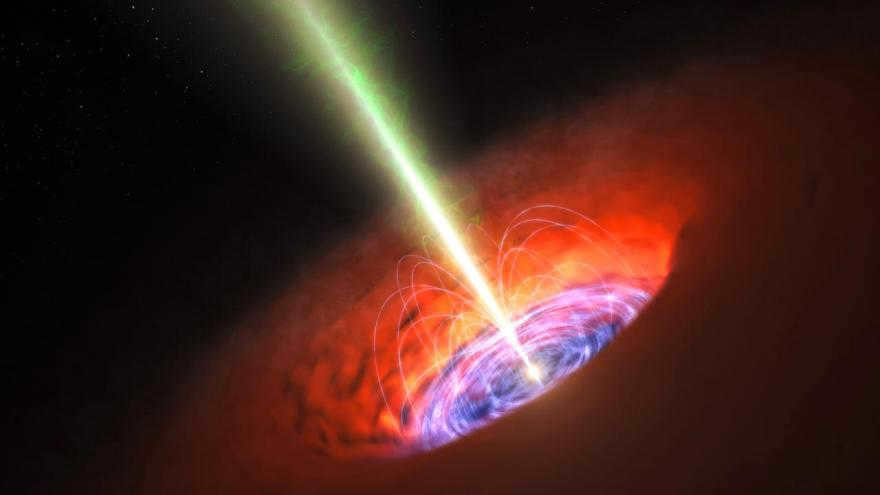
The general theory of relativity incorporates an intriguing characteristic – temporal symmetry. For instance, one can envision time flowing in reverse within any given equation, leading to an alternative yet still valid solution. By applying this principle to black holes, a white hole emerges.
Black holes are well-defined regions from which nothing can escape. In contrast, a white hole acts as a receptacle into which nothing can descend. In fact, it repels all matter. However, despite the smooth mathematical representation, their existence in the natural world remains unproven. In fact, they are likely non-existent, with no means to ascertain their presence.
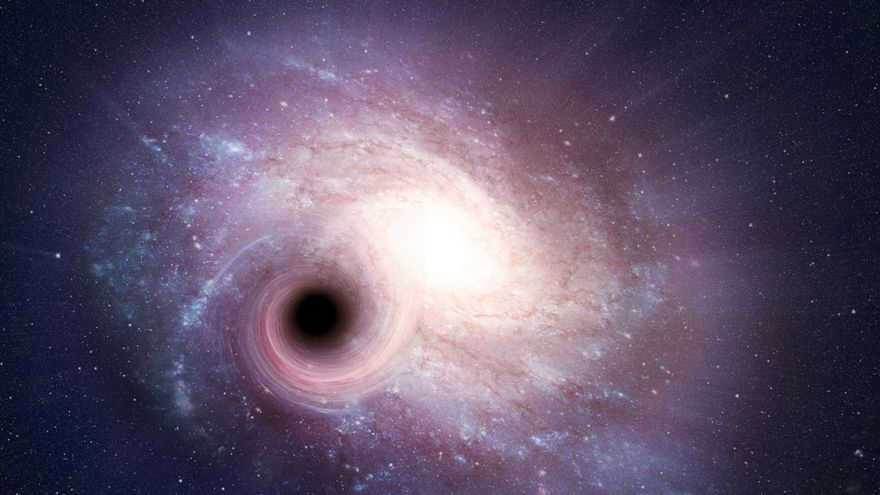
What is the definition of a wormhole?
Until now, we have been discussing the traditional black holes. These black holes do not rotate and do not have an electric charge. However, the opposite scenario is where things get interesting. For instance, it is possible to enter a black hole without encountering the singularity. Additionally, the “interior” of the black hole can connect with a white hole. In other words, you would enter a type of tunnel where the black hole serves as the entrance and the white hole serves as the exit. This combination is known as a wormhole.
It is interesting to note that a white hole has the potential to exist in various locations, including within another universe. If we acquire the knowledge of how to manipulate these wormholes, we could facilitate rapid transportation to any point in space. What makes this concept even more fascinating is the possibility of time travel.
However, it is important not to get too excited until we understand a few key points. Unfortunately, there is a significant likelihood that white holes do not actually exist. As we have previously mentioned, white holes are derived from mathematical equations and have not been confirmed as real objects. Additionally, all observed black holes result in the collapse of matter and do not give rise to wormholes. Ultimately, the journey ends with the singularity.
However, even an actual wormhole lacks stability. Any small disruption (such as your journey) can lead to its collapse. Don’t believe me? Well, what about safety? A stable wormhole will not offer a comfortable trip. The radiation inside it (whether relic, stellar, etc.) remains in synchronization at high frequencies. Stepping into such a place means willingly subjecting oneself to being cooked.
Indeed, a black hole is a celestial entity that was once a star. Presently, it is a dormant celestial body. This enigmatic phenomenon occurs when a star has depleted its resources and perished.
What is a black hole?
To explain what a black hole is, it is important to understand the life cycle of stars.
Stars are formed from massive clouds of gas and dust called nebulae. Over time, the particles in these nebulae come together and create a large ball of matter. Astronomers refer to these formations as young stars.
Like any other celestial object, stars are governed by the law of gravity. As a result, the particles within the star continue to compress. This compression leads to immense pressure at the center of the star, triggering a thermonuclear reaction. This reaction produces an enormous amount of heat and light.
A state of equilibrium arises as a result of opposing forces. One force, gravitational in nature, compresses the new star externally, while another force, arising from internal processes, compresses it internally. This state of balance can be maintained for a considerable period of time, approximately 10 billion years, which is the lifespan of a star.
However, eventually, the cosmic body’s internal fuel supply is depleted. The thermonuclear reaction begins to diminish, causing the force that was previously tearing the star apart from within to dissipate. As a result, the equilibrium of forces is disrupted.
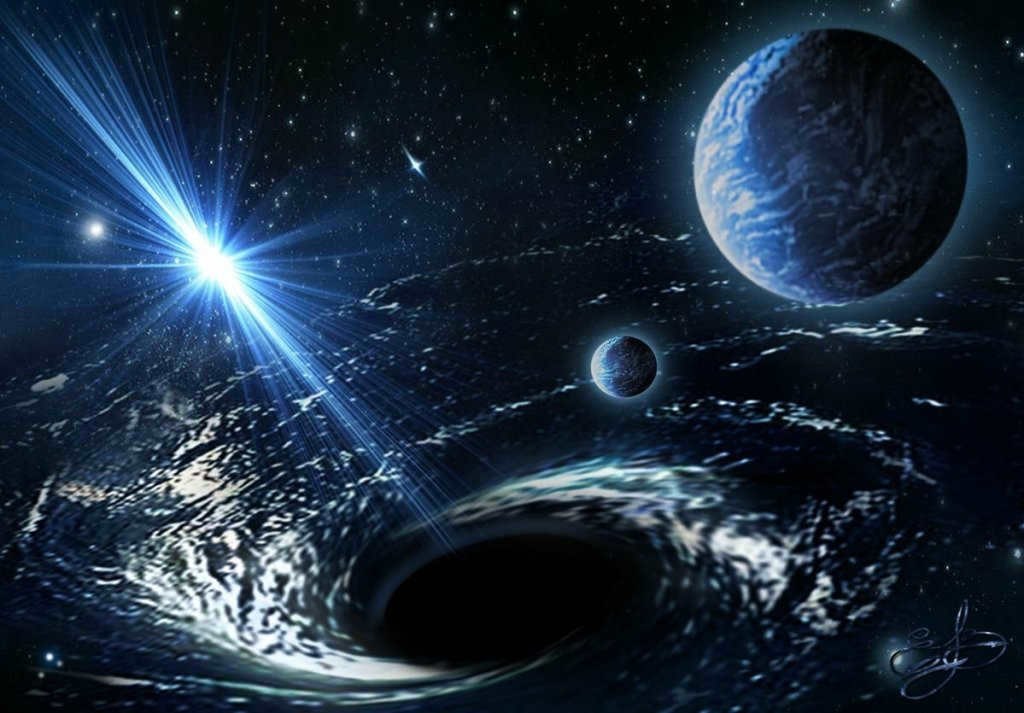
What occurs to an object when a thermonuclear reaction diminishes?
During the phase when the thermonuclear reaction within the star decreases and gradually diminishes completely, it starts to contract significantly. This phenomenon leads to the formation of neutron matter, an incredibly dense substance. Its mass is unimaginably vast.
To comprehend the density and weight of neutron matter, we can draw a comparison with a familiar fruit. The mass of a neutron matter ball the size of an apple is ten times greater than the weight of all the marine life on Earth.
This is the type of process that transpires when celestial luminaries conclude their existence. They transform from massive balls of fire into small and extremely heavy objects – neutron stars.
There is a massive gravitational field surrounding this dead star, which pulls in anything that comes near it in space. The strength of the gravitational force is incredibly powerful.
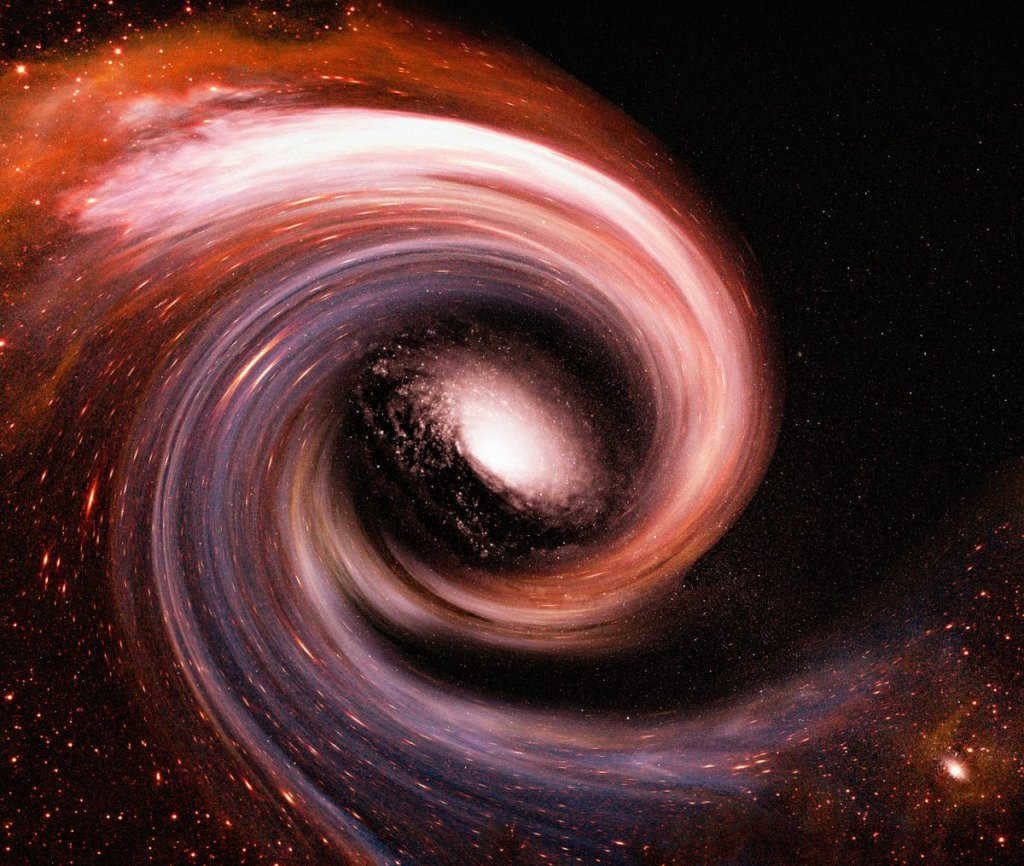
The celestial object that engulfs everything is known as a black hole.
Not only does a neutron star attract objects, but it also captures light radiation. As a result, light is unable to propagate and is constantly drawn towards the surface. This lack of illumination gives the neutron star a black appearance. The absence of light is the reason behind its name, black hole.
In essence, a black hole can be visualized as a type of funnel with an incredibly dense core at its center, which effectively absorbs anything that enters its gravitational field. Once drawn in by the force of gravity, these objects are forever trapped within its confines.
Up to this point, there is no knowledge among scientists about the existence of a force capable of bringing back everything that a black hole has attracted to itself.
Black holes are incredibly fascinating entities to study. The laws of physics that we currently understand do not apply within them. The gravitational pull of black holes poses a significant danger when they come close to planets and galaxies. These immense regions of gravity have the ability to consume anything that crosses their path.
